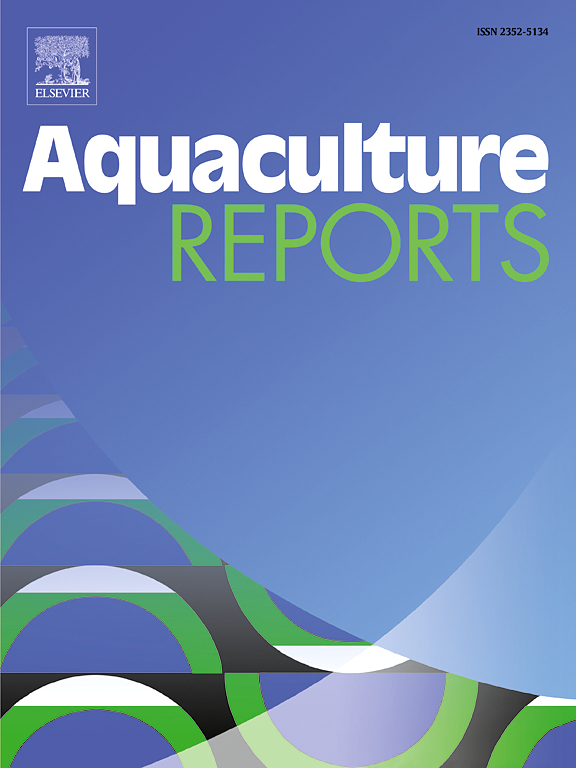Effect of land-based suspension conditions on the culture of the Rhodophyta Bangia fuscopurpurea
IF 3.2
2区 农林科学
Q1 FISHERIES
引用次数: 0
Abstract
Land-based suspension culture helps solving the problems faced by traditional marine-raft culture, such as uncontrollable environmental factors, limited breeding cycle, frequent disease and pest outbreaks, and high levels of impurities in cultured products. Bangia fuscopurpurea has a distinctive multi-row filamentous cell structure, which makes it ideal for suspension culture research. This study investigated the effects of different environmental factors —such as initial algal density, temperature, photoperiod, light intensity, nitrogen source and nitrogen-to-phosphorus ratio, ferric citrate, and salinity— on the growth of suspension-cultured B. fuscopurpurea for the first time. We also evaluated the nutritional content under different aquaculture modes and determined the optimum approach for removing epiphytic algae. Relative daily growth rates were significantly affected by temperature and N concentration, with the highest value (15.85 ± 0.74 % d−1) observed under conditions of 18°C, 12 L:12D photoperiod, 100 μmol m−2 s−1 light intensity, and N/P ratio 16:1 with NO3−–N. The breeding cycle was shortened to 6–9 days from 10–15 days typical of traditional marine-raft culture. Protein and crude fat content were significantly influenced by N concentration and temperature, respectively, reaching 38.18 ± 0.08 % and 5.23 ± 0.04 %. Thirteen types of previously unreported trace fatty acids were identified, and the n-7 unsaturated fatty acid content increased with cultivation time progressed. Our results highlight the advantages of suspension culture, the suspension culture will contribute to the development of the macroalgae industry by encouraging the development of new breeding spaces centered around land-based aquaculture facilities and offering a mode for using airlift photobioreactors to produce safe food.
求助全文
约1分钟内获得全文
求助全文
来源期刊

Aquaculture Reports
Agricultural and Biological Sciences-Animal Science and Zoology
CiteScore
5.90
自引率
8.10%
发文量
469
审稿时长
77 days
期刊介绍:
Aquaculture Reports will publish original research papers and reviews documenting outstanding science with a regional context and focus, answering the need for high quality information on novel species, systems and regions in emerging areas of aquaculture research and development, such as integrated multi-trophic aquaculture, urban aquaculture, ornamental, unfed aquaculture, offshore aquaculture and others. Papers having industry research as priority and encompassing product development research or current industry practice are encouraged.
 求助内容:
求助内容: 应助结果提醒方式:
应助结果提醒方式:


